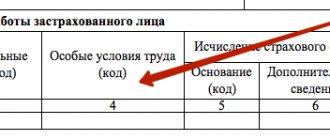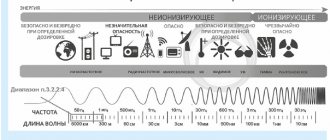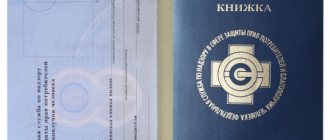Harmful to healthcare workers
Medical institutions often use part-time workers. If the staff is not fully staffed, then a number of functions and responsibilities are assigned to the existing staff in the clinic. This form of cooperation under a contract is provided for by law and regulated by the provisions of Article 60.2 of the Labor Code. Different jobs may be subject to different levels of “harmfulness.” In this case, how to calculate and pay the due compensation for harm from medical workers?
Article of the Labor Code of the Russian Federation No. 117 regulates the rules for issuing additional leaves. If the workplace assessment classifies it as at least 3.2, the medical worker is entitled to additional leave. Previously, according to the industry list, all employees of medical institutions had the right to 6.12 or 18.30 or more working days in addition to the main leave. Now this norm is not legitimate.
Video about those who are eligible for early retirement
If there are any unclear points about who has the right to early retirement, you should read the video below.
List No. 1 reflects production by industrial sectors, the technological process of which involves the presence of harmful and dangerous factors. Workers performing job duties in workplaces where the level of dust, toxic and carcinogenic gases, and radioactive substances exceed the permissible norm receive pension benefits earlier than other people. Subsections of List No. 1 for 24 industries list professions and positions where working poses a risk.
Compensation and benefits
If harmful factors in working conditions cannot be eliminated at a given enterprise, then employees are entitled to certain benefits. A minimum set of rights and compensations is established by law, which can be expanded by the employer’s decision. Additional privileges are prescribed in a collective or employment agreement, and are also enshrined in internal regulations.
Mandatory workers' rights include:
- Reducing working hours;
- Extension of annual leave;
- Passing periodic examinations in medical institutions at the expense of the employer;
- Accident insurance for the duration of work;
- Additional salary bonus;
- Providing special food or compensation corresponding to the amount of its cost;
- Assignment of early pensions.
Pension benefits
Early retirement is due to representatives of professions, a full list of which is fixed by law. Depending on the position and length of service, the employee receives the right to apply for a pension several years earlier than other citizens of the Russian Federation. It should be remembered that this benefit is provided only if there are additional contributions to the Pension Fund of the Russian Federation.
Submission and collection of documents for the assignment of pension payments can begin one month before termination of employment. In addition to standard documents, the Pension Fund of the Russian Federation will need to provide a certificate confirming harmful working conditions. The certificate is drawn up in free form at the place of work of the future pensioner and is certified by the seal of the organization and the signature of the manager.
If the harmfulness of professional activity at the enterprise is not confirmed, then employees can apply to the courts to order and conduct an extraordinary inspection. The results of court proceedings affirm the rights of citizens to early pension provision.
Harmful working conditions must be confirmed by expert assessments of a special commission. Employers should ensure maximum reduction and elimination of hazards through modern means that promote personal protection and improved equipment for employees.
Working citizens are advised to carefully monitor the proper fulfillment by employers of the obligation to pay additional contributions that allow early retirement. If the conditions for special deductions are not met, problems with the citizen’s social security will arise in the future. The company may cease to operate by the time the pension is issued, so it will be difficult to prove and collect the due amounts of money.
Applying for a disability pension
In order for a pension under List 1 for disability to be assigned, calculated and paid in full, you will have to arrange it yourself, since this type of security is an applicant’s. A package of documentation must be submitted to the Pension Fund of the Russian Federation at the place of your own registration or registration of actual residence.
List of documents
- Identity document: passport of a citizen of the Russian Federation or residence permit for foreigners.
- Papers confirming the right to early retirement on a preferential pension. These can be certificates-extracts from the employment record, from the employer, from the account card, etc.
- Application for early pension due to work in hazardous work from list 1. Fill out the sample application at home and bring it ready.
The pension fund may also require additional papers, for example, from housing and communal services, about the availability of bank accounts and the like, which can be submitted for a full three calendar months.
Submission and accrual procedure
The ways to declare the need to pay a preferential pension are as follows:
- Send all papers by mail. The letter must be recommended and have a list of all attachments.
- Register your personal account on the official Pension Fund and upload copies (scans) of all documents directly to the server.
- Contact MFC consultants.
- Personally take the papers to the nearest PF branch. This way you will know for sure that the papers have been accepted and there are no errors in them.
After the final acceptance of the documentation, ten days later you can already receive an answer on how, when and how much money you can receive from the pension benefits list for hazardous professions.
Converting working days to calendar days
The duration of paid vacations for employees is calculated in calendar days (Part 1 of Article 120 of the Labor Code of the Russian Federation). According to the List, additional leave is calculated in working days. When calculating the total duration of annual paid leave, additional paid leaves are summed up with the annual main paid leave (Part 2 of Article 120 of the Labor Code of the Russian Federation). How to calculate the duration of the entire vacation (main plus additional) is stated in Letter of the Ministry of Labor of Russia dated 02/01/2002 N 625-ВВ.
The calculation of the duration of annual paid leave is as follows.
- The number of calendar days of the main vacation is counted from the start date of the vacation.
- Next, count the number of days of additional leave in working days based on a 6-day working week.
- Determine the date of the last day of vacation.
- The total vacation period is converted into calendar days.
Non-working holidays falling during the vacation period are not included in the number of calendar days of vacation. The amount of vacation pay is calculated according to the rules established by Art. 139 of the Labor Code.
Example 3. Let's use the data from example 1. It is necessary to determine the duration of the entire vacation of A.I. Ogonkova.
Solution. From the start date of the vacation - June 4, 2007, we count 28 calendar days, excluding the holiday - June 12, 2007. The main vacation ends on July 2, 2007. From the start date of the additional vacation - July 3, 2007, we count 13 working days according to the calendar of a 6-day working week. The last day of additional leave is July 17, 2007. The total number of calendar days from June 4 to July 17, 2007 is 44 days, and with the exception of June 12, 2007 - 43 days.
List of professions in the Russian Federation with hazardous working conditions
- chronic diseases that were acquired during activities in hazardous workplaces;
- incomplete/complete loss of ability to work;
- resulting fatal diseases.
In addition, there are positions in which work is regarded as harmful; they are specified in industry agreements or collective agreements of the organizations themselves.
According to Art. 57 of the Labor Code of the Russian Federation, in situations where the specifics of the work performed involve the presence of harmful or especially dangerous conditions, the following information is indicated in the employment contract:
- labor function (activities according to the position according to the staffing table, profession, specialization; it is necessary to clarify qualifications and a clear type of assigned work). And if compensation, benefits, and certain restrictions are also associated with the performance of a set of works for such a position (profession, specialization), their list should be indicated according to the names specified in the qualification directories;
- working hours when they diverge from the general ones approved by this employer;
- terms of payment (volume of tariff rate or salary (official salary), additional payments, allowances, incentive accruals);
- compensation for harmful and (or) dangerous conditions (characteristics of the working conditions of this workplace are prescribed).
Such conditions are accompanied by significant severity, as well as danger, risk of injury, factors that can cause chronic diseases, partial or complete loss of ability to work, even death.
These factors include: In addition, you should remember: the size of the preferential pension is calculated taking into account the length of service in general, i.e. the longer it is, the better it will be, the higher the salary, the better. The list of such professions for 2019-2019 includes more than 300 professions that fall under the heading of harmfulness with certain consequences in the form of benefits, pension supplements, and accounting for length of service.
All you need to do is leave your question in the form below.
Classification of hazards by profession
The division occurs into four categories, which depend on the degree of risk of disease progression:
- First , this includes those groups of workers who have a slight risk of contracting occupational diseases, with the possibility of recovery. Deviations occur after the termination of work under harmful conditions;
- The second is characterized by persistent changes in the body that lead to the progression of chronic diseases, especially if a person has more than fifteen years of work experience in production. Occupational diseases make themselves felt and begin to develop;
- The third is due to persistent impairments in human health, which can lead to disability (frequent sick leave);
- The fourth is characterized by a functional impairment of health with complete loss of ability to work.
h2 4,0,0,0,0 —>
List of professions in the Russian Federation with hazardous working conditions
This list contains mainly such professions, regular stay in conditions in which is harmful to a person. Therefore, it is reasonable to conclude: those who work in such harmful conditions have the right to retire earlier than the period prescribed in the usual situation. Workers and specialists employed on certain types of vessels of the sea, river, and fishing industry fleets have the right to receive pensions for their length of service.
- dust level;
- degree of gas contamination;
- high humidity;
- significant background radiation;
- lack of natural light;
- high degree of noise;
- activities with mobile machines, mechanisms, harmful chemical or bacteriological substances, etc.
Regulatory framework for the appointment of early pensions
Old age insurance pensions are assigned to those citizens who have worked for a certain number of years. After old age no longer allows you to work effectively, the state begins to pay a monthly allowance, which is intended to replace previously available earnings. If a certain list of conditions is met, an old-age pension can be granted much earlier than the age criteria.
The right of any citizen of our country to an early retirement pension is enshrined in Federal Law No. 400. Article No. 30 of this law includes a complete list of professions that give the right to retire much earlier than prescribed under normal working conditions.
According to the changes of 2013, the employer must make additional insurance contributions for all employees of harmful and dangerous industries. At the same time, all workplaces of this type must be assigned to some hazard class, according to the compiled lists:
- List of 1 harmful professions for early retirement.
- List 2 for going on vacation early.
Let us note the benefits for people employed in such industries:
- Retiring from work early.
- The right to regular additional leave once a year, which is regulated by Article 117 of the Labor Code of the Russian Federation.
- Increased wage level, according to Article 147 of the Labor Code of the Russian Federation.
- Citizens are issued vacation and recreation vouchers without a queue, in most cases free of charge, but sometimes with a small compensation payment.
List No. 1 of preferential hazardous occupations for early retirement was approved by Decree of the supreme executive body of the USSR dated January 26, 1991 No. 10 (used as amended on October 2, 1991).
When considering the right to early pay for periods of work before 1992, the lists put into effect by Decree of the Supreme Government of the Soviet Union No. 1173 of August 22, 1956 are taken into account.
The procedure for calculating length of service for assigning an early pension is established by Decree of the Government of the Russian Federation No. 665 of July 16, 2014.
The pension law reform announced in 2021 did not consider new actions on preferential pensions. Federal Law No. 350-FZ of October 3, 2021 “On Amendments to Certain Legislative Acts of the Russian Federation on the Appointment and Payment of Pensions” retained the methodology for accounting for periods of work experience in hazardous conditions.
List of professions with hazardous working conditions according to the Labor Code of the Russian Federation in 2019
To apply for benefits and reduce the retirement age, an entry in the work book is sufficient.
Representatives of dangerous and hazardous professions are provided with a number of benefits that must be strictly observed by the employer. These include the following points: When faced with such offenses, employees can complain to the labor inspectorate or the prosecutor's office. As legal practice shows, in such situations the law is 100% on the side of the employee.
We describe typical ways to resolve legal issues, but each case is unique and requires individual legal assistance.
Harmful to healthcare workers
special assessments are recognized as safe or acceptable;
with the consent of the trade union.
whose work is associated with the danger of infection with Mycobacterium tuberculosis; AIDS prevention and control institutions working with radioactive substances and sources of ionizing radiation; psychiatric, drug treatment organizations; ambulance stations; organizations of the state sanitary and epidemiological service; blood transfusion stations; interacting with radioactive substances and sources of ionizing radiation. Depending on the positions held, additional paid leave is granted once a year to:
- 14-35 days - for health workers providing psychiatric care;
- 14-21 days - for health workers providing anti-tuberculosis care;
List of professions with hazardous working conditions
Today, there is a Government Decree according to which people working in hazardous conditions have the right to receive certain benefits. The first list was approved more than 60 years ago and applies to those people who began their working career under the Soviet Union, the second list of hazardous professions is intended for people working in modern Russia.
- High dust content in the atmosphere. In particular, the work of the lungs is hampered when dust settles in them. Moreover, the higher the content of harmful substances in the dust, the more destruction such breathing brings to a person.
- Poor quality lighting. In conditions of insufficient or inappropriate lighting, the human psyche is most sensitive and susceptible to disorder, as well as the mood and physical condition of a person.
- Loud noises.
- Harmful radiation.
- Working with harmful objects such as viruses and microorganisms.
- Working with harmful chemicals.
- Vibrations, dirt.
- Increased humidity levels.
- High or low temperature.
- Difficulty, duration and intensity of work.
List 1
Such a document began to be drawn up several decades ago. It underwent its final revision in 1991 and was approved at the same time. Now it includes professions that are particularly harmful and hazardous to health. Professions associated with the following types of activities are recognized as such:
- mining industry;
- work carried out deep underground;
- work related to ore and ferrous metals;
- working with coking coal;
- chemical and oil refining industry;
- work related to natural energy resources;
- work related to non-ferrous metals;
- electrical engineering;
- production of building materials;
- production of radio equipment;
- pulp and paper industry;
- production of artificial fibers;
- work at nuclear power plants;
- service in the navy;
- production of medicines.
According to this list, employees can apply for benefits, but only if one of the following conditions is met:
- men over 50 years of age with a total work experience of more than 20 years, of which the employee must have worked in hazardous work for at least 10 years;
- women over 45 years of age, with a total work experience of more than 15 years, of which the employee must have worked in hazardous work for at least 7 years.
The main privilege for workers from this list is a reduction in the retirement age by 10 years. In this case, both men and women receive benefits, but under different conditions.
Work experience giving the right to additional leave
The length of service that gives the right to additional leave includes only the time actually worked in harmful or dangerous working conditions (Part 3 of Article 121 of the Labor Code of the Russian Federation). Since the procedure for calculating length of service for annual basic paid leave and the procedure for calculating length of service for additional leave for work with harmful and (or) dangerous working conditions are different, the working years for which these leaves are granted, as a rule, do not coincide. The length of service giving the right to leave is calculated separately for the annual main paid leave and additional (clause 9 of the Instructions).
Perhaps, during the working year, the employee worked in different workshops, performed different duties, for which they are provided with additional leave of varying durations. In this case, the time worked in hazardous conditions should be calculated for each job separately (clause 11 of the Instructions). The time worked in hazardous working conditions includes only those days on which the employee was actually employed in these conditions for at least half of the working day. If the List contains the indication “permanently employed” or “permanently working”, then the days worked in hazardous working conditions are counted as days in which the employee was actually employed full-time in these conditions (clause 12 of the Instructions).
To calculate the length of service (the number of full months) giving the right to additional leave, it is necessary to divide the total number of days of work in harmful and (or) dangerous working conditions by the average monthly number of working days. In this case, the balance of days that is less than half the average monthly number of working days is discarded, and the balance of days that is half or more of the average monthly number of working days is rounded up to a full month (clause 10 of the Instructions). The average monthly number of working days is determined by dividing the number of working days in the corresponding year according to the working calendar established by the internal labor regulations by 12 months.
Example 1. Gas welder A.I. Ogonkov went to work in a workshop for the production of semiconductor materials (germanium and silicon) in the area for repair, adjustment, installation and maintenance of equipment. When working in this profession throughout the entire working year, the additional leave is 12 working days (IV - metallurgical production, B - non-ferrous metallurgy, No. 579 of the List). He started work on July 10, 2006.
From September 18, 2006 to November 30, 2006 A.I. Ogonkov worked as a gas welder in a loparite concentrate processing shop. For such work throughout the entire working year, the additional leave is 18 working days (IV - metallurgical production, B - non-ferrous metallurgy, No. 498 of the List). Then, on December 1, 2006, he returned to his previous workplace.
Since June 4, 2007, the employee has been provided with:
- regular annual paid leave (28 calendar days);
- additional leave on the basis of Part 1 of Art. 117 Labor Code.
What should be the duration of additional leave in working days if it is known that the employee has a 5-day working week?
Solution. Let us determine the number of working days worked at each workplace.
For the period from July 10 to September 17, 2006 - 50 working days, from December 1, 2006 to June 3, 2007 - 121 working days. In total, the employee worked for 171 working days under conditions for which he was entitled to additional leave of 12 working days. During the period from September 18 to November 30, 2006, the employee worked 53 working days.
The average monthly number of working days in both 2006 (248 working days: 12 months) and in 2007 (249 working days: 12 months) is 21.
Let's determine the number of full months worked at each workplace:
- 8 months (171 work days: 21 work days) - at the site for repair, adjustment, installation and maintenance of equipment;
- 3 months (53 working days: 21 working days) - in the loparite concentrate processing workshop.
Let us determine the number of days of additional leave provided for each “harmful” workplace:
- 8 days (12 days: 12 months x 8 months) - for work on the site for repair, adjustment, installation and maintenance of equipment;
- 5 days (18 days: 12 months x 3 months) - for work in the loparite concentrate processing workshop.
The total duration of additional leave is 13 working days (8 days + 5 days).
If an employee has the right to receive additional leave due to harmful working conditions for several reasons, then leave is granted only for one of them (clause 18 of the Instructions).
Example 2. A porter works in a radon clinic at an altitude of 2100 m above sea level. How to calculate the duration of additional leave?
Solution. Calculation of additional leave.
Legislative framework and regulation
Initially, occupational hazards were outlined in the Resolution of the USSR Cabinet of Ministers, dated January 26, 1991. It received a second edition on October 2 of the same year.
The document approves lists of people entitled to early retirement pension. The procedure for its approval is defined in Art.
30 of the Federal Law “On Labor Pensions” of 2013 and Resolution No. 665 of the Government of the Russian Federation.
This is important to know: Indexation of pensions in 2021: table
The class of hazardous working conditions is also regulated by other documents:
- Labor Code;
- Resolution No. 198P/122;
- Law No. 426 “On special assessment of working conditions”;
- Resolution No. 188.
The classification of working conditions allows us to determine how production factors affect a person.
Retirement according to lists 1 and 2 with full and incomplete preferential service
To assign an early old-age insurance pension to employees in Lists 1 and 2, three main conditions are legally defined:
- reaching the established retirement age;
- availability of full insurance experience;
- duration of special (preferential) experience.
The conditions for early retirement by age for men and women in accordance with Lists No. 1 and No. 2 are shown in the table:
| Assignment condition | Men | Women |
| According to List No. 1 | ||
| Retirement age | 50 years | 45 years |
| General insurance experience | at least 20 years | at least 15 years |
| Special experience* | 10 years | 7.5 years |
| According to List No. 2 | ||
| Retirement age | 55 years | 50 years |
| General insurance experience | at least 25 years | at least 20 years |
| Special experience * | 12.5 years | 10 years |
| * If these persons have worked in dangerous and harmful jobs (according to List No. 1) or hard work (according to List No. 2) for at least half of the period established above and have the required length of insurance (total) length of service, they will be granted an early pension with a reduction in retirement age : | ||
| Reducing the age according to List No. 1 | for one year for each full year of benefit work | |
| Reducing the age according to List No. 2 | for one year for every 2.5 years of benefit work | for one year for every 2 years of preferential work |
A prerequisite for early retirement is the presence of at least 30 pension coefficients (IPC).
Example
The man has 4 years of experience under List No. 1, 9 years under List No. 2 and 26 years of total insurance experience. He does not have the right to retire in old age according to List No. 1. If you have “pure” experience according to List No. 2 (9 years), the right to a pension arises at 57 years of age. When added to the periods of work in List No. 2, the periods of work in List No. 1 result in a preferential length of service equal to 13 years. This gives the right to retire at 55 years of age.
Which industries are considered harmful?
In accordance with Russian legislation, professions with working conditions harmful to health belong to the following industries (list 1):
- mining;
- preparation, enrichment, roasting of minerals, including ores;
- metallurgy (ferrous and non-ferrous);
- thermoanthracite and coke production;
- gas release during metallurgical production, as well as generator gas;
- chemical industry;
- processing of energy minerals (coal, shale, gas, oil);
- production of refractories from silica (silica products);
- metal processing;
- production of gunpowder, explosives and ammunition equipment;
- production and repair of radio equipment and electrical equipment;
- porcelain, earthenware and glass factories;
- production of building materials;
- pulp and paper mills;
- enterprises for the production of artificial and synthetic fibers;
- production of biological products and medicines;
- printing;
- healthcare institutions;
- transport services of various industries;
- work with rare earth and radioactive elements;
- nuclear industry and nuclear energy;
The list of 2 harmful (hard and dangerous) professions is somewhat different from the first and additionally contains the following industries:
- production of metal products;
- mercury substations for electricity conversion;
- drilling and extraction of energy resources (oil, shale, gas);
- steam power facilities (energy trains and power plants);
- light industry;
- peat extraction;
- food factories;
- institutions providing social security;
- production of inks for printing;
- construction, repair, and restoration of various structures and buildings;
film copying enterprises;- communications sector;
- agrochemical work in agriculture.
Also included in lists 1 and 2 are a number of general professions that negatively affect the health of personnel (battery workers, sandblasters, gas welders, divers, soldering irons, etc.).
Government Decree No. 665 of July 24, 2014 contains the necessary clarifications on the issue of using lists to grant the right to early assignment of pensions.
Not all hazardous occupations approved by the staffing table give the right to social guarantees and benefits, but only those whose representatives directly perform official duties associated with possible harm to the body. So, at a metallurgical plant, a foundry worker is included in the risk group, but a business manager or the head of the legal department is not.
If you are getting a job in a hazardous industry, do not be lazy to check with the personnel service whether the title of the position in the registration card and work book corresponds to the wording of lists 1 and 2. Otherwise, problems may arise with officials when registering early retirement. Often such disputes are resolved only in court.
Classification and list of professions with hazardous working conditions
- Dust. The high concentration of dust in the air has a harmful effect on the human respiratory system. In industries where this factor is higher than normal, special equipment and protective respirators are used.
- Lighting. The degree of illumination that deviates from generally accepted standards has a detrimental effect on the worker’s vision. This includes bright light, heating of lighting fixtures, and a lot of visual work. This factor can be reduced by using masks and protective glasses.
- Noise. Increased noise levels at work negatively affect the hearing system of workers. This can be expressed in a decrease in the body’s auditory functions and in the occurrence of pain. Protection against this factor is carried out by using protective equipment with sound-proofing and sound-absorbing properties.
- Radiation. The degree of influence of this factor on a person depends on his physiological data and is calculated based on them. Increased radiation can contribute to changes in the skin and deterioration of the general condition of the body. The use of special screens and personal protective equipment reduces this factor.
- Factors of biological impact - these factors include microorganisms, macroorganisms, bacteria. As a result of the negative impact of these factors on a person, injuries occur and diseases develop. Employees in the production of biological drugs, medicine, healthcare, and veterinary medicine are at risk. To reduce the risk, special protective equipment and safety precautions are used.
- Chemical exposure factors - working with certain chemicals (lead, benzene, arsenic, hydrogen sulfide, etc.) poses a danger to the cardiovascular, respiratory, and nervous systems of the human body. According to the maximum permissible concentrations, they are divided into low hazardous, moderately hazardous, highly hazardous and extremely hazardous. The use of gas analyzers and chromatographs helps control the concentration levels of hazardous substances. Ventilation is used to reduce the level of danger.
- Factors of psychophysical impact. These factors include increased mental, physical, and emotional stress. It occurs when working with problem people, with increased responsibility, or when working with equipment that requires great concentration. To reduce this factor, use the help of specialists (psychologist, neurologist) and reduce working hours.
Factors of maximum permissible concentrations and maximum permissible limits are considered harmful, which contributes to the occurrence of occupational diseases. If these standards are exceeded so much that they threaten the life and health of the employee, then the factors are considered dangerous.
Harmful labor factors
The assignment of working conditions to classes 3 and 4 depends on the presence of harmful factors in the labor process and the working environment.
Environmental factors are divided:
- to physical (temperature, humidity, electromagnetic and thermal radiation, etc.);
- chemical (chemical substances, mixtures, including some substances of biological nature, obtained by chemical synthesis and (or) for control of which chemical analysis methods are used);
- biological (microorganisms-producers, living cells and spores contained in bacterial preparations, pathogenic microorganisms - causative agents of infectious diseases).
Labor process factors:
- severity of labor (high load on the musculoskeletal system and functional systems of the body);
- labor intensity (high load on the central nervous system).
The degree of harmfulness of factors acting on an employee during the work process is assessed by comparing their actual level, determined using measurements during workplace certification, with hygienic standards for working conditions. The hygienic standard establishes the maximum permissible level of exposure to a harmful factor. The effect of a harmful factor, limited to a maximum permissible value, during daily work for 8 hours and no more than 40 hours a week, does not cause illness or deviations in health during the period of work or in the long-term life of the employee and his descendants. If the actual value of exposure to a harmful factor exceeds the hygienic standard (maximum permissible level), working conditions are considered harmful or dangerous.
Read about the procedure for certifying workplaces based on working conditions on p. 108. - Note. ed.
If working conditions are recognized as harmful or dangerous, the employer must comply with certain rules when hiring employees, organizing the work process, providing the employee with protective equipment, special clothing, therapeutic and preventive nutrition, setting wages and compensation payments, granting leave, dismissal (see table on page 94).
Read about the procedure for providing workers with special clothing and special food, assigning increased wages and compensation payments, their accounting and tax accounting in the following issues of the magazine. — Note. ed.
Classification of hazardous working conditions, benefits and compensation for employees
The provisions of the Labor Code of the Russian Federation oblige employers to take all necessary measures to ensure mandatory safety for personnel, as well as improve working conditions.
Federal Law No. 426-FZ establishes the following classifications of working conditions:
- Optimal - do not cause irreparable harm to health.
- Acceptable - can provoke occupational diseases.
- Harmful - carry the risk of disability during work processes.
- Dangerous – pose a danger to the health and life of employees.
Harmful working conditions differ from dangerous ones because they do not imply a threat to the lives of workers.
Dangerous work includes working underground, with explosives and radioactive substances, ammunition, etc. If a place of work is certified according to special hazard classes, then minor candidates, women raising children under 1.5 years of age, pregnant women, and those who already have irreversible health problems cannot be accepted.
List of harmful factors subject to expert assessment: The first two types are present at specialized enterprises.
To reduce their impact on employees, management should provide personal protective equipment and disinfection free of charge. The commission conducting the identification of hazards and harmfulness in production factors must take into account: Potential hazards and dangers are not identified in relation to: For new enterprises, certification must be carried out no later than 2 months from the start of work.
Any changes in working conditions will entail an early inspection. Employees of enterprises have the right to be present when assessing working conditions. They can additionally provide the expert commission with information about the presence of deviations from the norm in the work premises.
Mandatory rights of workers include: The given privileges are provided only for the time actually worked under the influence of harmful factors. Combining two jobs with hazard class 3 or 4 is prohibited, because the time worked will exceed the maximum allowable.
How to determine harmfulness
According to the law, conditions are considered harmful if they result in a deterioration in a person’s health, a weakened immune system, a deterioration in their ability to reproduce, or the appearance of occupational diseases.
Issues regarding the recognition of certain professions as hazardous are dealt with by the Labor Inspectorate. To recognize a particular profession as hazardous, a special assessment of work is carried out according to various criteria. Based on the sum of these factors, a decision is made about the harmfulness of the profession.
If a profession is found to be harmful to health, the person will be given special benefits.
Today, there are 2 lists in healthcare with professions and areas of activity that have a negative impact on health. Their difference from each other lies in the degree of influence of harmful factors on the worker’s health, but the same professions can be found in both lists of industries with hazardous working conditions.
Sample referral for medical examination
——————————————————————¬¦ Limited Liability Company “PHARMAPRO” ¦¦ ¦¦ Referral for periodic (preliminary) ¦¦ medical examination ¦¦ ¦¦ Last name , name, patronymic: Nikolaev Alexander Mikhailovich ¦¦ Date of birth: October 22, 1966 ¦¦ Workshop, area: antibiotic production workshop ¦¦ Harmful factors (according to Appendix No. 1 to Order No. 83):¦¦ chemical, antibiotics (production , application) (1.3.8.1) ¦¦ Work experience in these conditions: no ¦¦ ¦¦ Ivanova ¦¦ Signature: Head of the HR Department ——— T.N.
Ivanova¦¦ ¦¦ June 22, 2007 ¦¦ ¦¦ M.P. ¦L—————————————————————— The referral form is filled out in a similar manner when employees undergo periodic medical examinations.
List of sources
- pensionology.ru
- trud.guru
- isf-consultant.ru
- WiseEconomist.ru
- exjurist.ru
List No. 2 of preferential professions
- processing metals and coal (welders, shop workers, rolled metal production);
- signalmen;
- employees of food factories;
- railway workers;
- social service workers;
- pharmaceutical production workers.
The specific list includes the following professions:
- electricians;
- geologists;
- agricultural machinery drivers;
- reinforcement workers, concrete workers;
- rolling stock drivers, conductors;
- workers installing communications equipment and maintaining stations;
- workshop for the production of metal pipes, chain-link mesh.
For your information! In order to avoid mistakes and correctly determine which category an employee belongs to, all professions are divided into lists. They are constantly adjusted according to the economic needs of the state.










